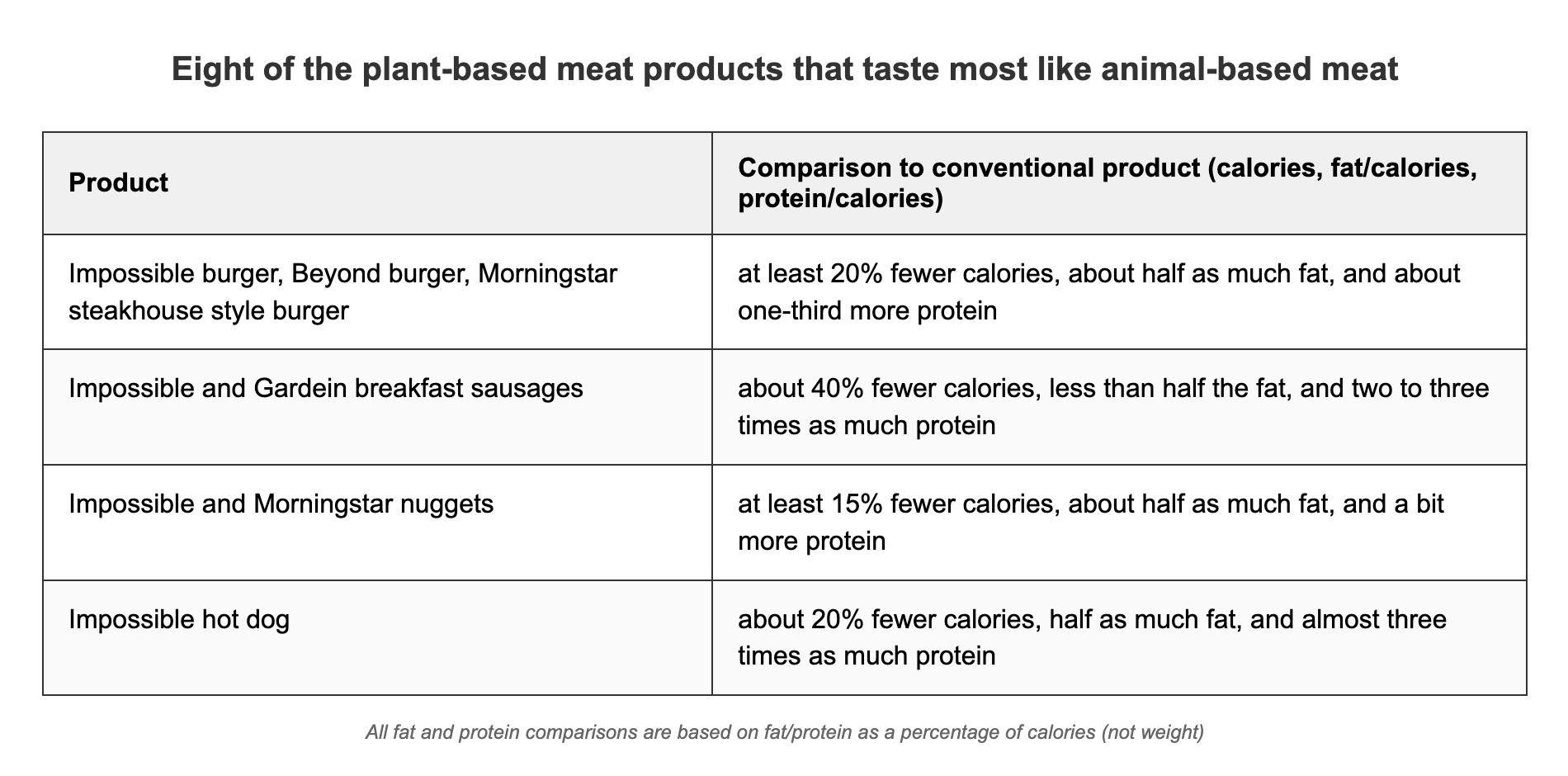Investing in alternative proteins now could help address malnutrition, a key driver of which is a lack of access to affordable, high-quality proteins.
Innovation Commission: Climate Change, Food Security, Agriculture
Alternative proteins will produce the same total calories as [conventional animal] proteins but do so using 640 million fewer hectares, thus freeing land for nature and making both biodiversity and deforestation targets easier to meet.
ClimateWorks Foundation and UK Foreign, Commonwealth and Development Office
Globally, more than 700 million people are malnourished, and more than 3 billion cannot afford a healthy diet (UN FAO 2025). Alternative meats require fewer resources than conventional meats, so they can decrease global food prices, making nutritious food more affordable for everyone. They can also alleviate malnutrition and offer an inexpensive and nutritious option for direct feeding programs. Finally, alternative meats can preserve forests and biodiversity—including ocean biodiversity—while slashing air pollution, water pollution, and climate emissions.
Innovation Case for COP28: Alternative Proteins, Innovation Commission for Climate Change, Food Security, and Agriculture (2023): Nobel Laureate in economics Michael Kremer’s commission at the University of Chicago finds that alternative proteins can: 1) relieve food insecurity by lowering food prices; 2) decrease climate emissions and foster climate resilience; and 3) alleviate malnutrition. (GFI 1-pager)
Alternative Proteins for Climate, Hunger, and Global Health (2024): A 90-minute event from COP29, co-hosted by CGIAR, FAO, and GFI. Speakers and panelists include CGIAR Executive Managing Director Ismahane Elouafi, UN Foundation Food and Climate Director Lasse Bruun, Global Alliance for Improved Nutrition Climate and Nutrition Lead Sarah LaHaye, World Health Organization Climate and Health Program Officer Cristina Romanelli, Sir Andrew Steer, and more.
The State of Food Security and Nutrition in the World, UN FAO (2025): FAO’s annual flagship report underlines the fact that higher food prices are linked to hunger and malnutrition. Plus, more than 3 billion people cannot afford a healthy diet.
Creating a Sustainable Food Future (2019): The ultimate guide to sustainable food systems, from the World Resources Institute, with support from the World Bank, the UN Environment Programme (UNEP), the UN Development Programme (UNDP), and more.
Livestock’s Long Shadow: Environmental Issues and Options, FAO (2006): This seminal report finds that animal agriculture is “one of the top two or three most significant contributors to the most serious environmental problems, at every scale from local to global.” These environmental problems include “land degradation, climate change and air pollution, water shortage and water pollution and loss of biodiversity.” Since the report came out, meat production globally is up more than 100 million metric tons, from 266 million metric tons in 2006 to 370 million metric tons in 2023.
Feeding Climate and Biodiversity Goals with Novel Plant-Based Meat and Milk, Nature Communications (2023): Researchers from the International Institute for Applied Systems Analysis find that 50 percent adoption of plant-based meat and milk would almost fully halt deforestation and result in land use needs for agriculture declining by 653 million hectares, agricultural emissions declining by 31 percent (while producing far more food), water use declining by 10 percent, and more. The authors explain that these are very conservative numbers. (GFI 1-pager)
Global Innovation Needs Assessment: Protein Diversity, UK Foreign, Commonwealth and Development Office and ClimateWorks Foundation (2021): This model from McKinsey economists finds that at 50 percent penetration, alternative proteins could mitigate 5 billion metric tons of emissions and add $1.1 trillion to the global economy. This would also decrease agricultural land needs by 640 million hectares (which would decrease food prices by 12 percent) while “reducing both deforestation risk and pastureland, thereby allowing for the restoration of natural ecosystems, including biodiverse and carbon-dense forest area.” (GFI 1-pager)
Decoupling Methane Emissions from Meat with Alternative Proteins, Climate Advisers (2023): This report finds that while agricultural methane mitigation warrants an all-of-the above strategy, “the single most powerful strategy to drive emissions down further is innovation in alternative proteins, products that aim to provide consumers the sensory experience and nutrition of animal meat using plants, fermentation, or cellular agriculture instead of live animals.” See also “Global Innovation Needs Assessment: Food System Methane” (ClimateWorks Foundation and Global Methane Hub) in chapter 9’s sources, below.
Stop Ghost Gear: The Most Deadly Form of Marine Plastic Debris, WWF (2020): At least 10 percent of marine litter is abandoned fishing gear, and “somewhere between 500,000 and 1 million tonnes of fishing gear gets left in the ocean every year… Ghost gear is the most deadly form of marine plastic debris.”


 Dr. Michael Greger on Plant-Based vs. Conventional Meat
Dr. Michael Greger on Plant-Based vs. Conventional Meat